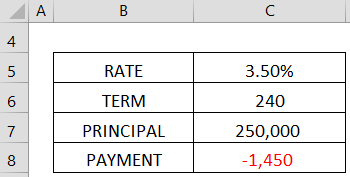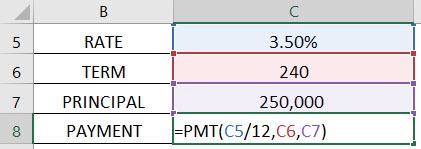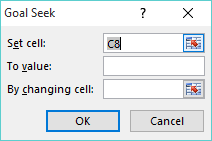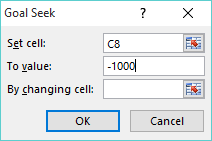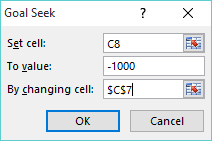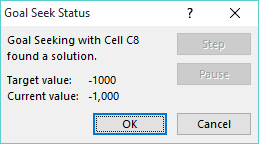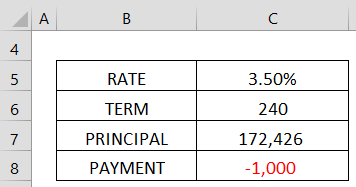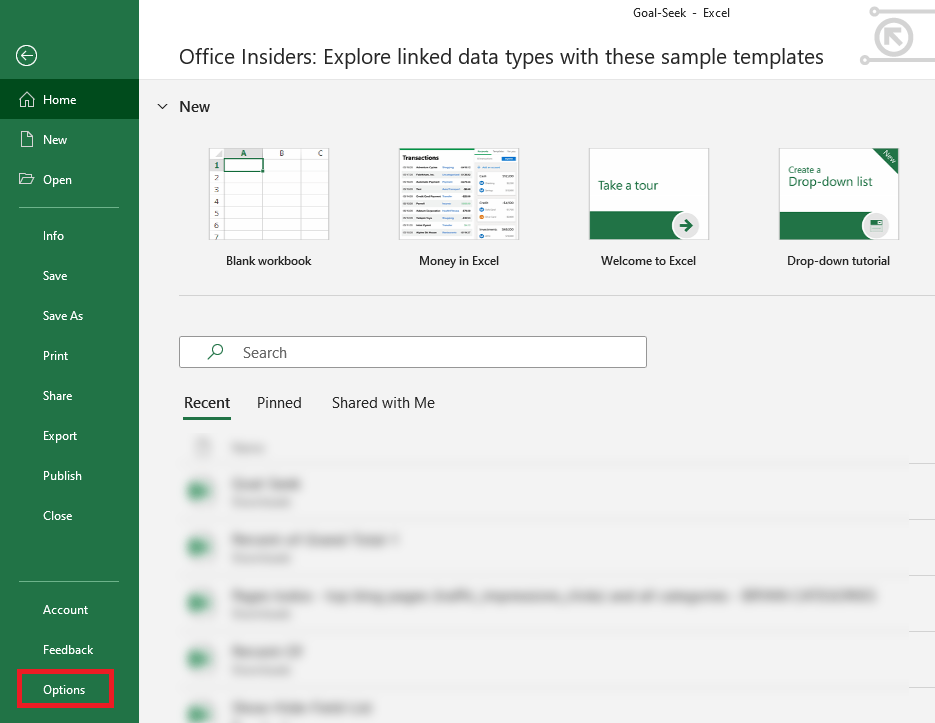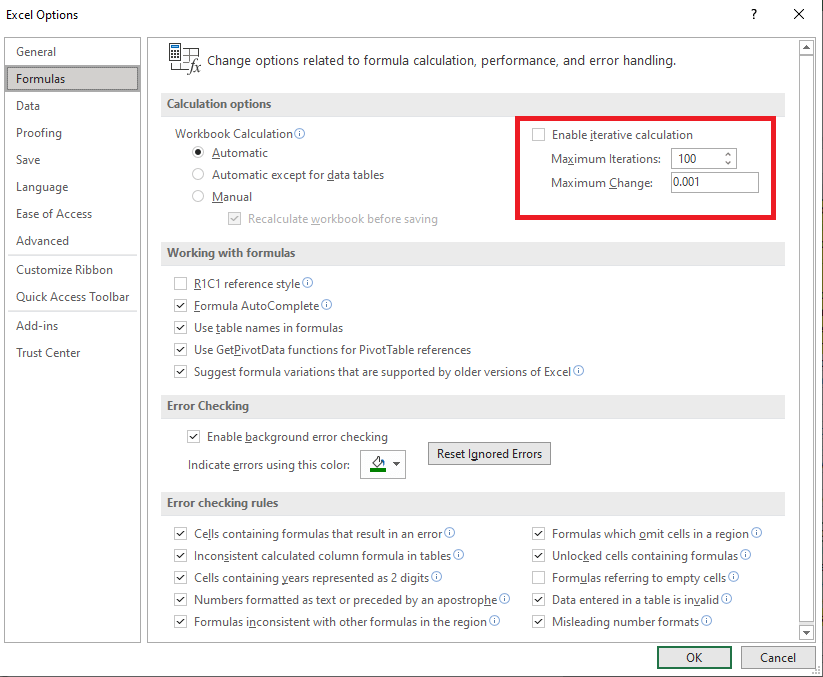If you have a formula and want to show a specific result, but you do not know what input values to change within the formula, then Excel Goal Seek Formula is the one for you. Excel Goal seek formula is an excellent way to minimize the efforts required in testing out a hit and trial method of finding answers. In a matter of seconds, it can find out the exact answer that would have taken a long time to find out manually. It can easily be used for back calculations as well. For example – You can set your net profit’s required amount to 0 in the Excel goal seek formula to find out the number of sales you have to generate to reach the breakeven point. Similarly, any required amount to reach a certain goal can be calculated easily using the goal seek excel online.
Key Takeaways
-
Solve for Unknown Inputs – Goal Seek allows you to reverse-engineer a formula by adjusting one input value to achieve a specific result.
-
Works with Simple or Complex Formulas – You can apply Goal Seek to any formula, whether it’s a basic calculation or a multi-step formula chain.
-
Accessible via Data Tools – Goal Seek is easy to find under Data → What-If Analysis → Goal Seek, making it quick to set up.
-
Perfect for Financial & Business Scenarios – Common uses include figuring out loan payments, break-even points, or target sales to reach a profit goal.
-
One Variable Adjustment – Goal Seek can only change one input cell at a time, but it’s powerful when you need to tweak a single factor to hit a desired outcome.
Table of Contents
Goal Seek Overview
The Goal Seek Formula comprises of three arguments, namely :
- Set cell – This is the cell that has the amount which we need to find out.
- To value – This is the value that you need the set cell amount to change to.
- By changing cell – This is the cell that will be changed to test out multiple possibilities and arrive at the exact amount.
Imagine you are calculating the payment terms on a loan.
Your PMT formula gives you an amount of $1,450 but you can only afford to repay $1,000. You can use Excel Goal Seek Formula to find out what Principal you can borrow based on your $1,000 budget.
How to Use Excel Goal Seek To Find The Formula Result You Want
STEP 1: Enter the 3 input variables that you will need to use for your PMT formula i.e. Interest Rate of 3.50%, Term of 240 months & Principal of $250,000
STEP 2: Enter the PMT function in cell C8 =PMT(Interest Rate/12, Term, Principal) which will give you a monthly payment amount of -$1,450.
Here using the PMT function, we have successfully linked the changing cell (principal cell) with the set cell (payment cell).
STEP 3: Select the cell C8 and go to Data > What If Analysis > Goal Seek
STEP 4: SET CELL: Enter the reference for the cell that contains the formula that you want to resolve. In our example, this reference is cell C8
STEP 5: TO VALUE: Type the formula result that you want. In our example, we want the payment to be -$1,000 (Note that this number is negative because it represents a payment)
STEP 6: BY CHANGING CELL: Enter the reference for the cell that contains the input value that you want to adjust i.e. One of our 3 variables (Interest Rate, Principal & Term).
In our example, this reference is cell C7 for the Principal.
It is important that this changing cell is linked directly or indirectly to the set cell. Otherwise, there will not be any possible way for excel to perform calculations if there is no link between the changing and the set cells.
STEP 7: Press OK and Excel Goal Seek Formula will run and produce a result. Press OK to keep the results or Cancel to discard
Similarly, you can use this method to know how to use goal seek to find interest rate as well!
It may happen that Excel is not able to find an exact value via the goal seek function. It will get you the closest value and inform you that the goal-seeking may not have a solution.
In such cases, you can try the following methods to clarify this issue:
Method 1: Double-check goal seek parameters
While using Excel goal seek formula, it is essential that the required cell and the changing cells are either directly or indirectly dependent on each other.
There can be multiple layers of formulas that eventually link both the cells, but a link should be present for goal seek to work. Make sure that such a relationship exists between the two cells.
Method 2: Circular references
It should be noted that the changing cell and the required cell are not interdependent, i.e., there are no circular references present.
For Excel Goal Seek Formula to work properly, the involved formulas should not be co-dependent on each other.
Method 3: Adjusting the iteration settings
There’s a setting in Excel where you can adjust the number of possible solutions Excel will calculate, including changing its accuracy of the calculation.
To change them:
STEP 1: Click File from the tab list.
STEP 2: Select Options.
STEP 3: Click on Formulas in the left vertical bar
Here, change these settings:
- Maximum Iterations (it denotes the number of possible solutions; the higher the number the more iterations). Increase this number if you want Excel to test out more possible solutions to the goal-seeking that you require.
- Maximum Change (it denotes the accuracy of the results; the lower the number the higher the accuracy). Decrease this number if your formula requires more accuracy. For example, if you are testing a formula with an input cell equal to 0 but Excel Goal Seek Formula stops at 0.001, setting Maximum Change to 0.0001 should fix the issue.
Frequently Asked Questions
What is Goal Seek in Excel?
Goal Seek is a tool that adjusts the value of one input cell to make a formula return the result you specify.
Where do I find Goal Seek in Excel?
Go to the Data tab → What-If Analysis → Goal Seek to access it.
Can Goal Seek handle multiple variable changes?
No, Goal Seek only adjusts one variable at a time. For multiple inputs, you’d need to use Solver instead.
What types of problems can Goal Seek solve?
Goal Seek is great for financial forecasting, budgeting, loan calculations, or any situation where you need to determine the required input to hit a target value.
Does Goal Seek update the actual cell value?
Yes, once Goal Seek finds the solution, it replaces the input cell’s value with the result unless you choose to cancel.
John Michaloudis is a former accountant and finance analyst at General Electric, a Microsoft MVP since 2020, an Amazon #1 bestselling author of 4 Microsoft Excel books and teacher of Microsoft Excel & Office over at his flagship MyExcelOnline Academy Online Course.

